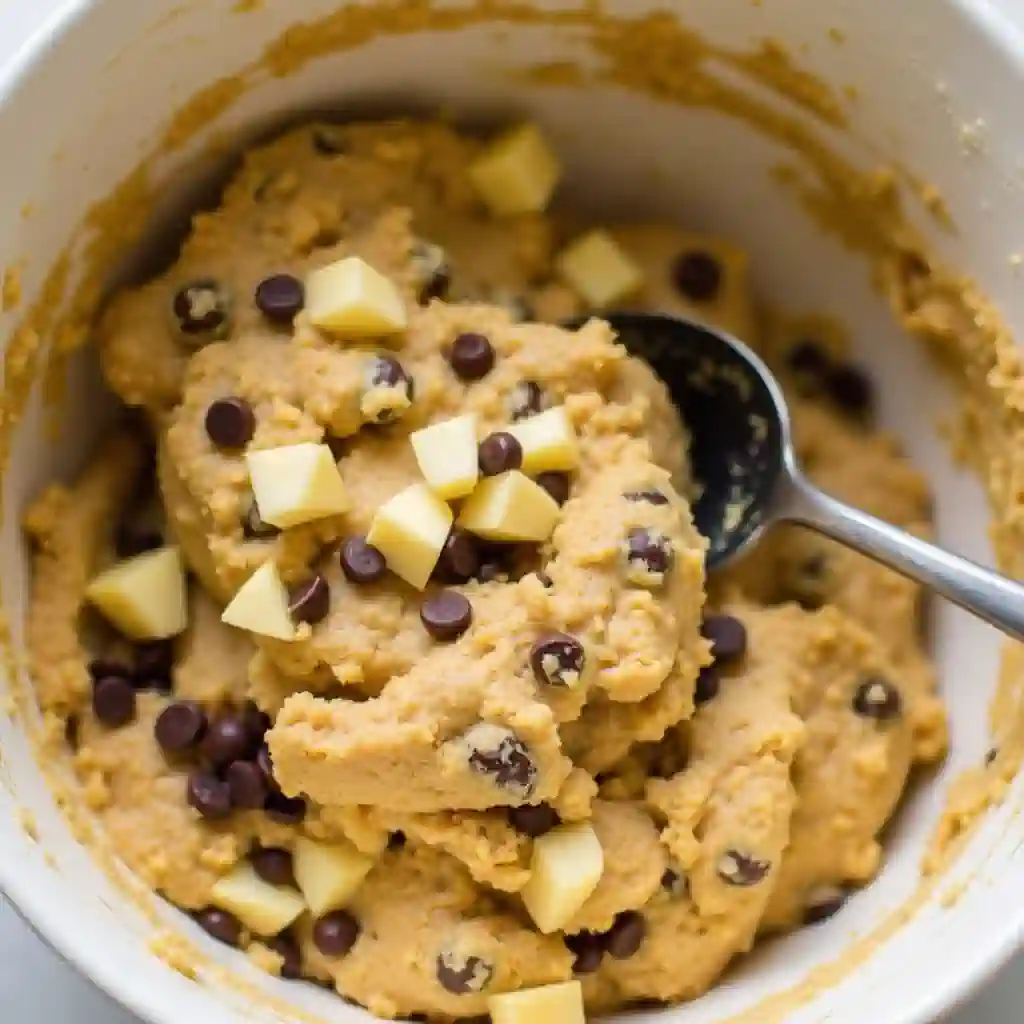Everyone loves a soft, chewy cookie that melts in your mouth, right? Whether you’re baking chocolate chip cookies, oatmeal cookies, or sugar cookies, there’s always a magic ingredient that makes all the difference. But the question remains: What is the secret ingredient to keep cookies soft?
In this article, we’ll explore everything you need to know about creating cookies with the perfect texture—moist, chewy, and soft every single time. From the best ingredients to simple baking techniques, we’ve got the tips and tricks you need to take your cookie game to the next level. Let’s get started!
Table of Contents
Understanding the Importance of Soft Cookies
Before we get into the secret ingredient, it’s important to understand why soft cookies are so appealing. We all know that texture plays a huge role in how we enjoy cookies. And when it comes to soft cookies, they have this delightful balance of chewiness that keeps you coming back for more.
Why Soft Cookies are the Perfect Treat
Soft cookies aren’t just delicious—they’re comforting. Imagine biting into a warm, chewy chocolate chip cookie, where the chocolate chips melt perfectly in your mouth and the dough is just the right consistency. It’s that perfect combination of flavor and texture that makes soft cookies a favorite for everyone. When done right, soft cookies are the perfect treat for any occasion, whether it’s a cozy evening or a gathering of friends.
What Makes a Cookie Soft and Chewy?
To understand what makes a cookie soft and chewy, you need to know how ingredients work together. Cookies have several key components: flour, sugar, fat, and eggs. The texture of your cookie depends on the ratio of these ingredients and the techniques used to bring them together.
For instance, brown sugar tends to make cookies chewier because it retains moisture better than white sugar. Similarly, the amount of butter or fat in your recipe can make or break the softness of your cookies. By adjusting the quantities and understanding the role of each ingredient, you can make cookies that stay soft and chewy, even after they’ve cooled down.
So, if you’re wondering what is the secret ingredient to keep cookies soft, you’re about to find out. Keep reading to uncover some surprising tips that will transform your baking game.
Key Factors in Achieving Soft Cookies
When baking cookies, achieving the perfect softness isn’t just about adding the right ingredient—it’s about how different elements of the recipe come together. There are key factors that directly impact the texture of your cookies. Let’s take a look at what contributes to a soft and chewy cookie, and why certain elements matter more than others.
Moisture: The Key to Softness in Cookies
One of the most important aspects of soft cookies is moisture. This is where the secret to keeping cookies soft really starts. If your dough is too dry, it will result in cookies that are hard and brittle. To keep your cookies soft, you need to lock in moisture during the baking process. This is where ingredients like brown sugar and butter come in.
Brown sugar, for example, contains molasses, which helps retain moisture in the cookie dough. This gives you that chewy texture that people crave in a cookie. Butter also plays a major role by providing the necessary fat to keep the cookies tender. The more fat in the dough, the softer and chewier the cookies will be. So, if you want soft cookies, don’t skimp on the butter or sugar!
The Role of Fat in Cookie Texture
Speaking of fat, it’s one of the essential components in keeping cookies soft. The fat in cookies comes primarily from butter, but vegetable oils and shortening can also help. These ingredients not only add richness and flavor but also contribute to the texture by creating a softer structure. The more fat you use, the more tender your cookies will be.
However, it’s important to find the right balance. Too much fat can make the cookies greasy or cause them to spread too much, while too little can result in cookies that are dry and crumbly. If you’re trying to figure out what is the secret ingredient to keep cookies soft, fat is definitely one of the main players. It helps achieve the ideal soft, chewy texture that makes every bite irresistible.
The Secret Ingredient to Keep Cookies Soft

So, we’ve talked about some of the factors that impact cookie softness, but now it’s time to reveal the secret ingredient that can truly transform your cookies. If you’re still asking, what is the secret ingredient to keep cookies soft, keep reading—because it’s simpler than you think.
The Role of Brown Sugar in Keeping Cookies Soft
When it comes to keeping your cookies soft, brown sugar is a game-changer. Unlike regular white sugar, brown sugar contains molasses, which helps cookies retain moisture. This is crucial for ensuring that your cookies stay soft for longer.
Not only does brown sugar enhance the moisture content of the dough, but it also contributes to a rich, caramel-like flavor that makes your cookies even more delicious. If you want soft, chewy cookies that last, using brown sugar instead of white sugar will make a noticeable difference. Brown sugar helps maintain the perfect balance between chewiness and softness.
When substituting, keep in mind that brown sugar is slightly moister than white sugar, so it’s also beneficial in preventing cookies from becoming dry. If you’re aiming for ultimate softness, you can even use a mix of light and dark brown sugar for extra flavor and moisture retention.
Why Adding Extra Eggs Can Improve Softness
Here’s another trick you might not expect—adding an extra egg to your cookie dough can help keep your cookies soft. Eggs act as a binder in the dough, holding everything together while also contributing to the moisture content. By adding an additional egg yolk, you create a more tender, soft texture in your cookies.
Egg yolks contain fats that help with the moisture content of the dough, while the egg whites provide structure. The extra yolk will give your cookies that extra softness and chewiness that you’re looking for. However, be careful not to add too many eggs, as it could alter the texture and structure of your cookies.
By using this technique, you’re layering more moisture into the dough, which ultimately results in cookies that stay soft and chewy for longer periods. So, if you’re looking for what is the secret ingredient to keep cookies soft, extra eggs may be exactly what you need!
How Different Ingredients Affect Cookie Texture
To create soft cookies, understanding how different ingredients interact with each other is crucial. If you’ve been wondering what is the secret ingredient to keep cookies soft, it’s often the way ingredients are used together. Let’s take a closer look at how specific ingredients impact your cookies’ texture and softness.
The Importance of Butter Consistency: Softened vs. Melted Butter
One of the most common mistakes when baking cookies is using the wrong type of butter. Softened butter is ideal for most cookie recipes because it incorporates more easily into the dough, resulting in a smooth, cohesive texture. Softened butter allows air to mix into the dough, helping your cookies rise slightly without losing that chewy consistency.
In contrast, melted butter can cause your cookies to spread too much during baking, leading to flatter cookies that may not be as soft. If you’re after that perfect chewy texture, always ensure that the butter is softened at room temperature, not melted.
Tip: To soften butter quickly, just cut it into small cubes and let it sit for 10-15 minutes. Avoid microwaving it, as it can melt unevenly.
How Flour Type Affects Cookie Softness
The type of flour you use plays a significant role in the texture of your cookies. All-purpose flour is commonly used in most cookie recipes, but cake flour can make your cookies even softer. Cake flour has a lower protein content, which means less gluten is formed during mixing. This leads to a softer, more delicate cookie texture.
If you don’t have cake flour on hand, you can make a simple substitution by replacing some of the all-purpose flour with cornstarch. Just use 1 tablespoon of cornstarch per cup of all-purpose flour. This will help lighten the dough and give you a softer, fluffier cookie.
Baking Techniques to Maintain Softness in Cookies
Baking techniques are just as important as ingredients when it comes to creating soft cookies. Understanding how to handle your dough and how long to bake your cookies will help ensure they turn out perfect every time.
Chill Your Dough: Why It Helps with Soft Cookies
If you’ve ever wondered why your cookies spread too much or turn out flat, the problem might be the dough’s temperature. Chilling your dough before baking can make a significant difference in the texture of your apple chocolate chip cookies or any type of cookie. When you chill the dough, the fat in the butter solidifies, making it less likely to spread excessively during baking.
Chilled dough also holds its shape better, allowing your cookies to retain a more chewy texture. It’s best to chill the dough for at least 30 minutes, but if you can chill it for a few hours or overnight, that’s even better. This gives the flour time to absorb the liquids and helps the cookies develop a richer flavor.

Baking Temperature: The Best Strategy for Soft Cookies
The temperature at which you bake your cookies can affect their texture and softness. For apple chocolate chip cookies, the best baking temperature is 350°F (175°C). This is a moderate temperature that allows the cookies to bake evenly, with the edges turning golden brown while the centers remain soft and chewy.
Tip: Be sure to preheat your oven before baking, as this ensures the cookies bake properly from the start. If you bake at too high a temperature, your cookies will cook too quickly on the outside, leaving the inside undercooked and less soft.
If you want a bit more texture, try lowering the temperature to 325°F (163°C) and bake the cookies a little longer. This slower baking process allows the cookies to set without overbaking, maintaining that soft and chewy consistency.
Common Mistakes That Make Cookies Hard
Baking apple chocolate chip cookies or any cookie recipe can be a bit tricky. If you’re not careful with certain factors, your cookies could end up hard, dry, or crumbly instead of soft and chewy. Let’s take a look at some common mistakes that could be standing in the way of your perfect cookies.
Why Overbaking Ruins Soft Cookies
Overbaking is one of the most common reasons why cookies turn out hard. Even if the edges are golden and the cookie looks set, the interior might still be undercooked. However, when you leave it in the oven too long, it will continue to cook from the residual heat, making the whole cookie dry and crunchy.
Solution: To avoid overbaking your apple chocolate chip cookies, keep a close eye on the baking time. If the edges turn golden but the center is still soft, it’s time to remove them. Remember, cookies continue to bake for a minute or two after being removed from the oven due to the heat of the pan. If you prefer softer cookies, err on the side of underbaking slightly.
How Using Too Much Flour Can Lead to Dry Cookies
Another reason cookies can become too hard is using too much flour. While flour is essential for structure, too much of it can absorb moisture, leading to dry, dense cookies. This is particularly true when you measure flour incorrectly by scooping it directly from the bag.
Solution: Always spoon and level your flour when measuring it, instead of scooping directly with the measuring cup. This will help you avoid adding too much flour to your dough, keeping the texture light and soft. Additionally, if your dough looks too thick or dry, you can add a splash of milk to bring the texture back to the ideal consistency.
Flavor Variations and Add-ins That Won’t Compromise Softness
If you’re looking to make your apple chocolate chip cookies even more exciting, you can experiment with flavor variations and add-ins. However, it’s important to remember that some add-ins might affect the softness of your cookies. Let’s explore how to enhance flavor without compromising texture.
Adding Chocolate Chips, Nuts, and Other Mix-ins
One of the best things about baking apple chocolate chip cookies is the ability to customize them. Chocolate chips are a given, but you can also add walnuts, pecans, or even a handful of toffee bits to create a unique cookie. These add-ins give the cookies extra flavor and crunch, but they shouldn’t interfere with the softness you’re after.
Tip: Be mindful of the amounts you add. A cup or so of chocolate chips and nuts is typically perfect. Too many add-ins can overwhelm the dough, affecting the texture. The key is balance—mix just enough to add flavor without making the dough too dry.
Can You Add Fruits or Spices Without Affecting Softness?
Fruits like dried cranberries, raisins, or chopped apples add moisture and flavor, but they can also increase the water content in the dough. To keep your cookies soft, ensure that the fruits are finely chopped and not too wet before adding them to the dough.
Spices like cinnamon and nutmeg pair wonderfully with apples and chocolate chips, enhancing the flavor without changing the texture. These spices bring warmth and depth to your cookies without making them too dry or hard.
Tip: To ensure the perfect balance, add spices and fruits in moderation. Overloading the dough can disrupt its structure and lead to firmer cookies.
Frequently Asked Questions (FAQs)
Baking apple chocolate chip cookies can leave you with a lot of questions, especially if you’re aiming for the softest, chewiest results. Let’s take a look at some of the most frequently asked questions and provide answers that will help you bake the perfect cookies every time.
What is the Secret Ingredient to Keep Cookies Soft?
The secret ingredient to keep cookies soft is brown sugar. Brown sugar contains molasses, which helps the dough retain moisture, resulting in soft and chewy cookies. Adding an extra egg yolk can also help by increasing the moisture content, making your cookies more tender.
For maximum softness, make sure to balance the other ingredients like flour and butter to prevent them from absorbing too much moisture and making the cookies dry. Combining these tips will give you the ultimate soft cookie every time.
Is It Better to Use Melted Butter or Softened Butter for Chocolate Chip Cookies?
For apple chocolate chip cookies, it’s better to use softened butter. Softened butter incorporates into the dough more evenly, which helps create that perfect chewy texture. Melted butter, on the other hand, tends to cause cookies to spread too much and can result in a crispier, flatter texture.
Tip: Always remember to let your butter soften at room temperature before starting your cookie dough. This helps maintain the structure and consistency of the dough, ensuring that your cookies come out soft and chewy.
What Apple is Best for Cookies?
When making apple chocolate chip cookies, the best apples to use are those that are firm and not too watery. Granny Smith apples are perfect because their tartness complements the sweetness of the chocolate and they hold up well when baked. You could also use Fuji or Gala apples if you prefer a sweeter taste in your cookies.
Tip: Make sure to finely chop your apples so they distribute evenly throughout the dough, contributing to the texture without making the dough too wet.
What is Snoop Dogg Cookies?
If you’re wondering about Snoop Dogg cookies, it’s a fun reference to Snoop Dogg’s famous cannabis-infused cookies. These cookies typically feature a blend of flavors like chocolate, nuts, and even cannabis oil, making them unique in the world of dessert. While Snoop Dogg cookies might not be suitable for every occasion, the idea of mixing creative ingredients and flavors is something that can inspire anyone in the kitchen.
Key Takeaways for Baking Perfect Apple Chocolate Chip Cookies
By now, you’ve learned all about the secret ingredient to keep cookies soft and the various techniques and tips that make your apple chocolate chip cookies the best they can be. Let’s summarize the key points that you should remember for perfect, soft cookies.
Bake at the Right Temperature for Chewy Cookies
For soft, chewy cookies, always bake at 350°F. This ensures that your cookies cook through without becoming too crisp. Keep an eye on the baking time, and remove the cookies when the edges are golden but the center is still soft.
Use Brown Sugar and Extra Egg Yolks for Moisture
Brown sugar is key to maintaining moisture in your cookies, while an extra egg yolk will ensure they stay soft and tender. These two ingredients are crucial if you’re after that perfect chewy texture.
Don’t Forget the Right Apple
The best apples for your apple chocolate chip cookies are tart, firm apples like Granny Smith. These apples provide the right texture and flavor without making your cookies soggy.
By following these simple tips and understanding what is the secret ingredient to keep cookies soft, you’ll be able to bake the best soft, chewy apple chocolate chip cookies every time. Happy baking!
Related Articles
- Apple Chocolate Chip Cookies Recipe: A New Favorite For Your Cookie Jar
- Crème Brulee Recipe: Simple Tips For A Luxurious Treat
- Vegan Chocolate Chip Cookie Recipe: Easy And Irresistibly Good
- Toll House Chocolate Chip Cookie Recipe: How To Nail The Original Flavor
- How Long Does A 2lb Meatloaf Take At 350 Degrees? Simple Cooking Tips

